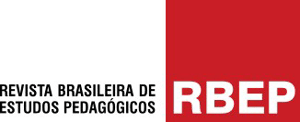Abstract:
This paper discusses a literacy practice focusing on the way that teacher and students interact with a literary text. The most important questions in this research are: How does a Brazilian elementary school teacher functions as mediator in the context of literary education? How a literacy practice is constructed through interactions with the book Dom Quixote de La Mancha? As a theoretical and methodological perspective, this analysis was based on the concept of literacy as a social practice proposed by New Literacy Studies (NLS) carried out by Heath (1983HEATH, S. B. Ways with words: language, life, and work in communities and classrooms. Cambridge: Cambridge University Press, 1983.), Street (1984STREET, B. Literacy in theory and practice. Cambridge: Cambridge University Press , 1984. , 1995STREET, B. Social literacies. Edinburg: Pearso, 1995. , 2003STREET, B. What’s “new” in new literacy studies? Critical approaches toLiteracy in theory and practice . Current Issues in Comparative Education, [New York], v. 5, n. 2, p. 77-91, 2003. ) and Barton, Hamilton and Ivanic (2000BARTON, D.; HAMILTON, M.; IVANIC, R. (Org.) Situated literacies: reading and writing in context. London: Routledge, 2000.). I have taken an ideological view on language that is carried out by Bakhtin (1981BAKHTIN, M. The dialogic imagination. Austin: University of Texas Press, 1981.) and Volochinov (1995VOLOCHINOV, V. N. Marxismo e filosofia da linguagem. São Paulo: Hucitec, 1995. ). The classroom data were collected through an inte,rview, video-recordings and field notes in a second year elementary public school attended by working class students in São João del-Rei, Minas Gerais. Data analysis indicates a wider use of literary texts in this classroom, since the teacher posed open questions not only related to the story itself, but questions that allowed the students to talk about their past experiences with literary books, expressing their voice in the teaching-learning process.
Keywords:
literacy; literary education; primary school

 Thumbnail
Thumbnail
 Source: author’s elaboration1Note from the reviser: In this context, the word “tia” (in Portuguese) is an endearing term often used by young students to refer to their teacher2Note from the reviser: In this context, the word “bem” (in Portuguese) is an endearing term equivalent to the word “dear”
Source: author’s elaboration1Note from the reviser: In this context, the word “tia” (in Portuguese) is an endearing term often used by young students to refer to their teacher2Note from the reviser: In this context, the word “bem” (in Portuguese) is an endearing term equivalent to the word “dear”